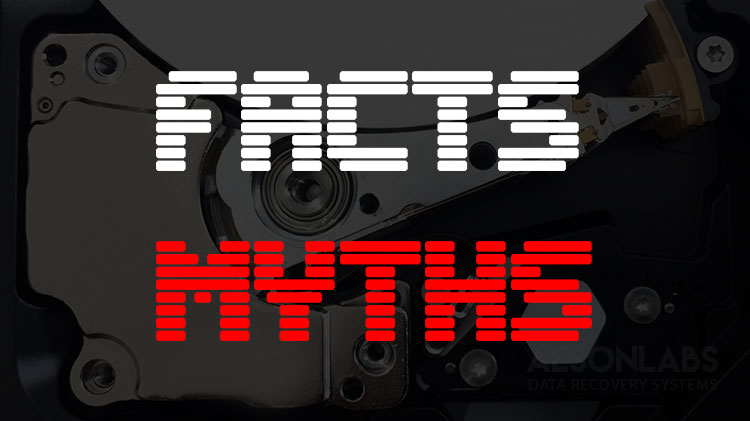
Let’s say you have a bad hard drive. It’s clicking or grinding or not spinning up. It is doing things that you are not able to remedy yourself – downloading a data recovery software program and recovering the data in the comfort of your home.
If you have a background in this industry, this won’t be very new to you. However, if you have never experienced a hard drive failure before, this article could be a huge help to you.
Let me begin by reviewing some myths that many data recovery companies like to make you believe. They often come in the format of a diagnostic report which will look and sound plausible at first. But in reality, the situation won’t be quite as bad as they will make it out to be.
It’s Severe!
The most common myth that permits data recovery companies to overcharge customers by hundreds of dollars is related to a single word. Any diagnostic report that contains the word ‘severe’ just makes things sound absolutely massive. That word will put fear into you that the situation is severe.

“Your hard drive has a severe head crash, we need to order three additional donor drives.”
Let me tell you right now that in most cases, up to 98% of the time, multiple donor drives are only required when there has been extensive platter damage. That’s usually the result of round scratches, water or fire damage. Regular head crashes, even the ‘severe’ ones, just require a head replacement. As a data recovery engineer who has serviced thousands of drives, I can easily state that often with head crashes (without platter damage) one donor is typically all that is required.
Firmware Damage
Another popular myth in the industry that allows data recovery companies to overcharge is firmware damage.
The diagnostic report would say something about the hard drive suffering severe firmware failure. Did you notice the word ‘severe’ again? So the message they are trying to say to you is that the drive’s firmware will require reconstruction and that’s going to take a few days to complete.
As it turns out, firmware failure is one of the easiest electronic failures to recover. With the help of PC3000 or equivalent hardware, combined with some engineering skill, most of these types of recoveries will take two or three hours… not days.
The next myth is “the Stuck Spindle”.
A stuck spindle is a ‘problem’ that data recovery companies can charge you $1,000+ simply because it is considered a mechanical failure. The reality is, for 95% of the cases I’ve encountered with a stuck spindle I was able to correct the issue in minutes. That includes releasing the spindle and calibrating the drive back to working condition.

So, much like the auto repair industry, it is easy to make a computer failure sound much worse than it actually is. This means that if you are not very tech savvy, you could get taken advantage of.
Now to look at some facts.
1. A head swap is not always enough to get a drive working again without calibrating it with PC3000 or equivalent hardware that has support for your specific drive. PC3000 is an essential tool for data recovery and this is why the majority of data recovery services use it. There are alternatives such as Dolphin and MrTLab that manufacture similar hardware but they do not have as much support for the millions of drives in existence.
2. Some newer drives (8TB, 12TB, 14TB) may not be supported by PC3000 – yet. That is until the appropriate support updates become available. If a company says they need to wait for an update, don’t be alarmed as that is a good thing. It means the company is not playing games with you. I have a great deal of respect for these types of companies.

3. Seagate or Western Digital (for example) manufacture hard drives and use their own hardware that usually has support for the drive vs PC3000. An example of this is a new hard drive with a scratched platter and head disabling is required to recover data. PC3000 does not have support for that drive – yet. And that is why the head cannot be disabled to recover the data. The company that produced that drive will have the technology to do that. This is the factual reason why data recovery from the manufacturer is so expensive.
So, in review, don’t let data recovery companies attempt to trick you by making a common recovery task sound bigger and more difficult to remedy than it is. The more you know about data recovery methods, the better prepared you are should you have to turn to one to correct a failure with your computer hard drive.
